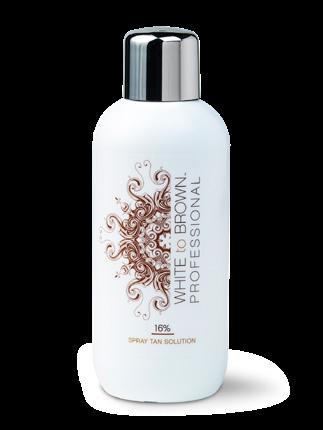
5 minute read
Candice Gardner Writes: Year-round UV Protection
Dermalogica’s Candice Gardner on why SPF isn’t just for summer.
Promoting
year-round UV protection
As we slowly approach spring, the topic of SPF and UV protection will start to come up more frequently in our clinics and skin centres. Whether your customers are trying to escape grey skies and cold weather, make a last quick dash down the slopes whilst there is still snow, or plan for their annual summer vacation, this conversation should not simply revolve around their intermittent exposure, but rather that daylight defence is part of everyday good skin care. Some would argue that sunscreens on a daily basis are simply not relevant to the Irish climate, except at points during the summer or when travelling abroad. Whilst intensity of the UV rays penetrating to the earth’s surface will vary with time of year and your geographic location, it is important to remember that there will always be some level UV radiation.
The UV Index The World Health Organisation developed the UV Index to help provide the public with information about the intensity of the sun, relevant to where they live, so that they can take adequate precautions when exposed to reduce skin cancer risk. Since Ireland has a generally low UV Index value of approximately 1-3 during the winter months, where risk of burning is unlikely in most skins, customers may believe UV protection is simply not necessary. Whilst burning increases skin cancer risk significantly, we now understand that skin damage and skin cancer are not only reliant on burning. Years of accumulative effect interjected with short bursts of extreme intermittent exposure during summer and summer holidays results in premature skin ageing and some surprisingly high skin cancer statistics despite the climate. Around 5% of UV rays are high intensity UVB rays, responsible for burning skin and are the main consideration in the UV Index. They may be less prevalent dependant on the time of year and level of cloud cover, which means most skins are unlikely to burn at these times. The other 95%, the UVA rays, have a longer wavelength allowing them to penetrate deeper into the skin. Prolonged UVA exposure can lead to hyperpigmentation, wrinkles, and skin cancer, even though there is no burning. The cumulative effect of UVA damage is what makes it imperative for clients to wear sunscreen daily.
HEV or blue light What about high energy visible light (HEV) or blue light? Whilst we have always experienced exposure from daylight, the increased use of computers and smart devices has increased the concerns around free radical damage and potential for health concerns in the future. High energy visible light is the part of the light spectrum that sits right next to UV. The energy produced is lower than that of UVA but can still cause some generation of reactive oxygen species (ROS). Early studies suggest that too much blue light may contribute to collagen degradation, darken hyperpigmentation, especially in deeper skin tones, as well as trigger inflammation. On the other end of the debate, there is a lot of good research on the benefits of blue light for treatment of breakouts and wound healing. Research is still emerging in this area and we do not yet have sufficient data collected over time to define accurately the level of exposure required to cause a specific degree of damage. However, since blue light borders UVA in the electromagnetic spectrum, some sunscreen filters like zinc oxide and titanium dioxide can also shield from blue light at the same time as providing UV protection. With this in mind, what advice should we provide?
Selecting an SPF relative to your needs Since prevention is better than cure, including sunscreen as part of your daily regimen will reduce unwanted skin changes. Protection from skin cancers and premature ageing requires both UVA and UVB shielding. Whilst SPF (Sun Protection Factor) provides a measure of protection from UVB and burning, always recommend a broad-spectrum sunscreen that has the designated symbol (UVA in a circle) on the packaging to ensure your product is protecting you from both. UVA screening is far more relevant in the context of daily and indoor use. No sunscreen can shield 100% of UV so select SPF relative to your needs. Here is the relative level of protection based on SPF:
•SPF15 – 93.3% protection •SPF30 – 96.6% protection
•SPF50 – 97.7% protection If the product has the UVA symbol then the level of UVA protection will be directly proportionate to the SPF. Note that there is only around one percent difference in protection between SPF30 and SPF50. Labelling regulations prevent a sunscreen claiming more than SPF50+ as the incremental protection is negligible and potentially misleading. Based on skin condition and preference you can select from chemical or physical sunscreens. Chemical sunscreens use chemical compounds such as octocrylene or octinoxate to absorb UV radiation and convert it to heat. This chemical reaction is innocuous but the increase in heat in the skin is the reason some skins find chemical sunscreens uncomfortable. The advantage is that they are invisible on all skins, and water resistant, making them suitable in lots of situations.
Physical sunscreens work like a mirror to reflect and scatter damaging UV rays away from the skin. The mineral particles of titanium dioxide and zinc oxide provide the physical shield and are generally the preferred choice for sensitised skins and babies. Since these particles don’t absorb into the skin they can rub off, sweat off or rinse off easily. Traditionally, they have also been incredibly thick, chalky formulas that left an annoying and obvious white residue. Thankfully, there are better options now available. If you are expecting an extended or high level of exposure, select a sunscreen and apply generously 30 minutes prior to exposure. Reapply every two hours.
For everyday layer over your regular moisturiser in the morning or select a multitasking moisturiser with built in SPF. A single daily application is sufficient for a day in the office with short bouts of exposure on the commute or at lunch.
Skin care professionals know that sunscreen is not just for summer, and with the right education, our customers can make this part of their year round regimen.








